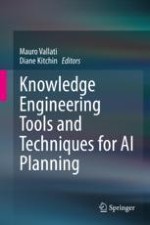2020 | OriginalPaper | Chapter
2. Automated Domain Model Learning Tools for Planning
Author : Rabia Jilani
Published in: Knowledge Engineering Tools and Techniques for AI Planning
Publisher: Springer International Publishing
Activate our intelligent search to find suitable subject content or patents.
Select sections of text to find matching patents with Artificial Intelligence. powered by
Select sections of text to find additional relevant content using AI-assisted search. powered by
